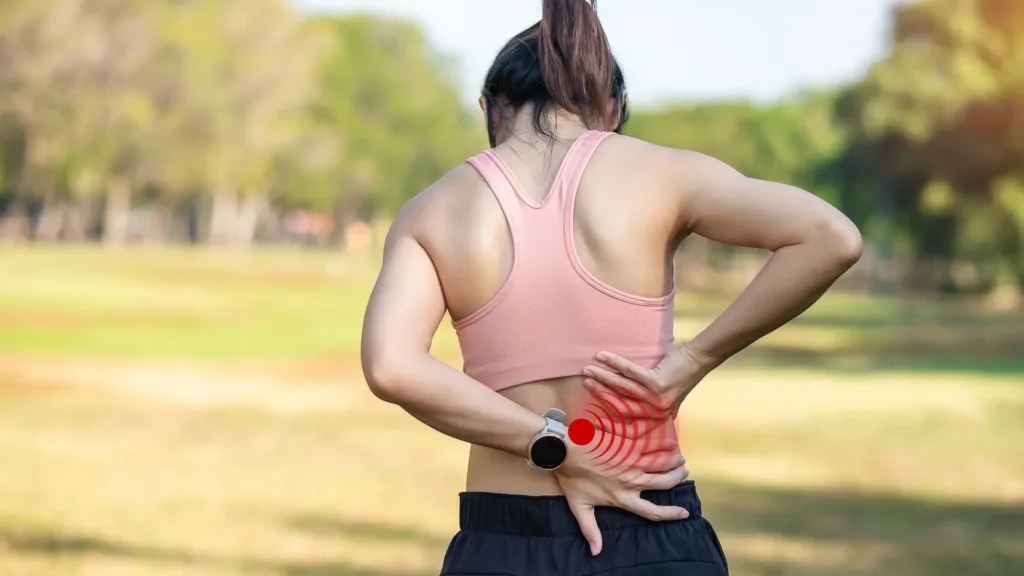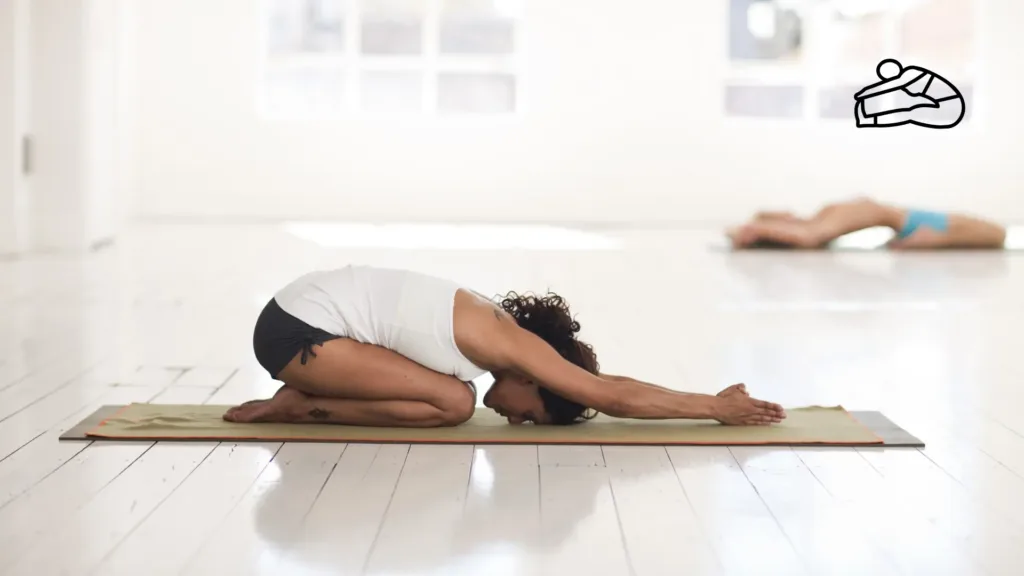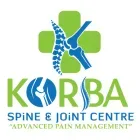Let’s be real—right-side lower back pain is the kind of ache that can sneak up on you when you’re least expecting it. Maybe you were just tying your shoes or waking up from what you thought was a restful night’s sleep. But suddenly—ouch! That nagging pain is hard to ignore. The good news? Most of the time, this discomfort isn’t something serious. And the best part? You can actually fix it from the comfort of your home. Let’s dive into what causes it and how to stop the ache with 10 easy fixes—no expensive gadgets or scary hospital visits required.
Table of Contents

Understanding Right-Side Lower Back Pain
Your lower back, especially on the right side, is a bit of a busy neighborhood. Muscles, nerves, bones, and even organs (like the right kidney and part of the intestines) all live there. So when something goes off—your body speaks up, loud and clear.
Common causes of the Right-Side Lower Back Pain
Here are some of the usual suspects:
- Muscle strain: Overdoing it at the gym or lifting heavy stuff wrong can cause Right-Side Lower Back Pain.
- Poor posture: Slouching while sitting or sleeping in weird positions.
- Kidney issues: Infections or stones in right kidney can cause Right-Side Lower Back Pain.
- Herniated disc or nerve pinching: One of the main reasons of Right-Side Lower Back Pain.
- Sciatica: This is a common culprit where the sciatic nerve, which runs from your lower back down your leg, gets compressed. The pain can be sharp and radiate down one side. If compression on right side exiting nerve it can cause Right-Side Lower Back Pain.
- Sacroiliac (SI) joint dysfunction: The SI joint connects your pelvis to your lower spine. Inflammation or improper movement here can cause significant pain.
- Appendicitis: Though less common, a sudden, severe pain in the lower right back and abdomen could be a sign of an inflamed appendix. This requires immediate medical attention.
When Should You See a Doctor?
We’re all for DIY fixes—but there are times when your body is waving a red flag 🚩. See a doctor if:
- The pain is intense and doesn’t improve in a few days.
- You have a fever or chills.
- There’s blood in your urine.
- You feel weakness or numbness in your leg.
- You suddenly lose control over your bladder or bowel.
- The pain is accompanied by severe abdominal pain.
If none of those apply to you—keep reading. Relief is coming up next.
10 Easy Fixes You Can Try at Home to Relieve Right-Side Lower Back Pain

1. Stretch It Out – Gentle Lower Back Stretches Stiff muscles? Try these:
- Child’s Pose: Gently lengthens the spine and releases tension.
- Knee-to-Chest Stretch: Lie on your back and pull one knee toward your chest, holding for 20–30 seconds. This helps relax the lower back.
- Cat-Cow Pose: This gentle yoga flow mobilizes the spine and can help reduce stiffness. Take it slow. Don’t push past discomfort.
2. Heat It Up
Use a Heating Pad A warm heating pad works wonders to loosen up tight muscles and improve blood flow. Use for 15–20 minutes at a time. The heat helps soothe and relax strained muscles.
3. Cool It Down
Ice Therapy for Pain Ice is best in the first 48 hours after a strain or injury. It reduces inflammation and numbs sharp pain. Wrap it in a towel (never apply ice directly) and go for 15 minutes, a few times a day.
4. Fix Your Posture
Your Chair Might Be the Culprit If you’re slouching at your desk or sofa all day, your lower back is going to protest and can cause right-side lower back pain. Sit upright, support your back with a small pillow, and keep your feet flat on the floor. Your computer screen should be at eye level to prevent neck strain, which can travel down to your back.
5. Tennis Ball Trick
Place a tennis ball under your lower back (but not directly on the spine!) and gently roll on it to release knots and tight trigger points. It’s like a mini-massage—without the spa prices. This is especially useful for targeting specific points of right-side lower back pain.

6. Activate Your Core
Simple Exercises That Help Your abs and lower back are teammates. A strong core provides essential support for your spine. Try:
- Bird Dog: On all fours, extend one arm and the opposite leg. This builds stability.
- Glute Bridges: Lie on your back and lift your hips. This strengthens your glutes and hamstrings, which support your lower back.
- Dead Bug: This exercise works your deep core muscles without putting stress on your spine. Do them slowly, daily, and you’ll build support for your spine, helping to alleviate right-side lower back pain.
7. Stay Hydrated
Your Spine Needs It Yes, plain old water helps! Your spinal discs are made of fluid. If you’re dehydrated, they can shrink and cause pain. Proper hydration keeps your discs plump and healthy, supporting your overall spine health and thereby prevent right-side lower back pain.
8. Over-the-Counter Relief
Smart Use of Painkillers Ibuprofen or acetaminophen can help if the pain is too annoying to ignore. Nonsteroidal anti-inflammatory drugs (NSAIDs) like ibuprofen are particularly useful as they reduce both pain and inflammation. Don’t rely on them daily—use sparingly and as directed. (Before taking any medicine please consult a qualified medical professional.)
9. Sleep Smart
Best Positions to Reduce Strain Avoid sleeping on your stomach. Instead:
- Try side-sleeping with a pillow between your knees to keep your hips and spine aligned.
- Or lie on your back with a pillow under your knees to reduce pressure on your lower back. Support your spine, and you’ll wake up happier and with less right-side lower back pain.
10. Move More
Why Gentle Walking Helps When you’re hurting, your instinct is to lie still. But light movement like walking actually keeps stiffness away and increases circulation, helping you heal faster. It’s a low-impact activity that can significantly improve your symptoms.
Bonus Tips for Long-Term Relief
- Build a Back-Friendly Lifestyle: Eat anti-inflammatory foods (hello, leafy greens!) and maintain a healthy weight. Excess weight puts additional strain on your spine, especially on the lower back.
- Invest in Ergonomics: A supportive chair, a proper mattress, and a well-aligned workstation are key.
- Mind-Body Connection: Chronic pain can be mentally and emotionally draining. Practices like deep breathing and meditation can help manage stress and reduce muscle tension.
What NOT to Do When You Have Right-Side Back Pain
🚫 Don’t lift heavy things while twisting your spine.
🚫 Don’t ignore pain for more than a few days.
🚫 Don’t rest all day—motion is lotion!
🚫 Don’t rely only on painkillers—fix the root cause.
🚫 Don’t force stretches that cause sharp pain.
Conclusion
Right-side lower back pain can feel like an annoying roommate who overstays their welcome—but with the right at-home tricks, you can send it packing. From gentle stretches to better sleep posture, there’s a lot you can do without stepping outside your front door. And remember, small changes in how you sit, move, and rest can make big changes in how you feel. So, are you ready to stop the ache and take your back health into your own hands?
FAQs
1. What organ is on the right side of the lower back? Your right kidney, part of the colon, and sometimes the appendix (if inflamed) are located there. Pain here could sometimes mean more than a back issue, so it’s important to be aware of other symptoms.
2. Can gas or bloating cause pain in the lower back right side? Yes, trapped gas or bloating can cause referred pain in your back. This is often described as a dull, aching sensation that can be confusingly similar to muscle pain.
3. How long should I try home treatments before seeing a doctor? If there’s no improvement after 5–7 days, or the pain worsens, consult a professional. If the pain is severe or accompanied by any of the “red flag” symptoms mentioned above, seek medical attention immediately.
4. Can a bad mattress cause right-side lower back pain? Absolutely. A mattress that is too soft or too old can fail to provide adequate support for your spine, leading to poor alignment and muscle strain, especially on one side if you favor a specific sleeping position.
5. Is walking better than rest for lower back pain? Absolutely. Walking increases blood flow and reduces stiffness, while prolonged rest can actually slow healing and make stiffness worse. Start with short, gentle walks and gradually increase the duration.
6. What are the best shoes for preventing lower back pain? Look for shoes that provide good arch support and cushioning. Avoid high heels or completely flat shoes for prolonged periods, as they can alter your posture and put extra stress on your lower back.
Further Reading
- 10 Easy Lower Back Pain Exercises You Can Do at Home — Feel Relief Fast!
- Low Back Pain on Right Side: 7 Hidden Causes You Shouldn’t Ignore
With 20+ years of clinical experience in spine, joint, and pain management, Dr. Vivek ensures every article reflects accurate, trustworthy, and up-to-date health advice.
Learn more about Dr. Vivek’s qualifications & journey →

Dr. Vivek Arora (BPT, MPT, FRCPT, MIAP) is a licensed physiotherapist with over 20 years of experience in spine and joint care. He specializes in evidence-based physiotherapy, patient education, and long-term recovery without surgery. Passionate about empowering patients through knowledge, Dr. Arora shares expert-backed health content for a global audience.
To know more about Dr. Vivek’s journey, click here.
